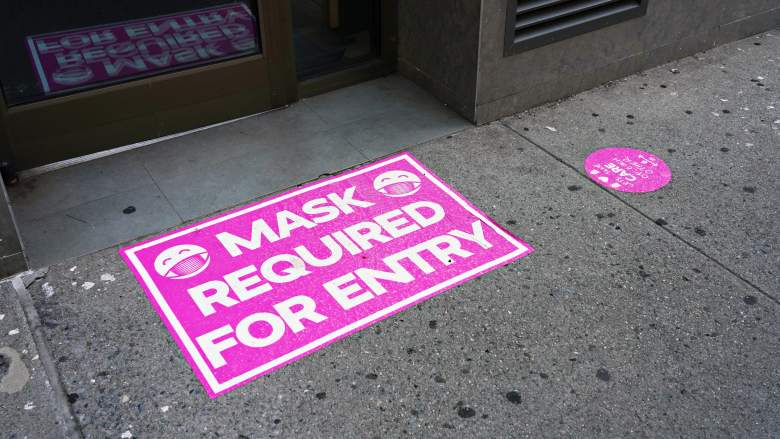
The effect of COVID-19 on society has been sweeping, from death and illness to job losses, business closures, canceled events and clashing perceptions of the seriousness of the illness itself. The bottom line is that coronavirus is wreaking havoc on human emotions. As a result, there has been no shortage of headlines of people behaving badly.
There were the Oklahoma City McDonald’s workers shot after they asked two women to leave the dining room because it was closed due to COVID-19 precautions; the Trader Joe’s employees that were attacked by two men at a Manhattan after they were asked to wear face masks inside the store, and the 17-year-old Chili’s hostess who was beaten by 13 women when they were unhappy about her trying to enforce the COVID-19 seating policy in Baton Rouge.
While customer service employees have to sometimes deal with upset customers, coronavirus seems to have brought hostility to a new level. It’s become such an issue that the Centers for Disease Control issued guidance Monday for limiting workplace violence associated with COVID-19.
The CDC’s Guidance Suggests Strategies for Employees Who Have to Deal With Irate Customers Including Installing Panic Buttons & Having a Safe Room
The CDC’s guidance is predominately for “retail, services (e.g., restaurants), and other customer- or client-based businesses,” who they say are most likely to encounter angry clients. That’s because it’s in those situations where people are most commonly being asked to wear masks, follow social distancing rules, or to be patient and wait for their turn to enter a store.
Since employees in these businesses now find themselves in the role of enforcers of rules that make some people bristle, the CDC says that those companies need to train employees on how to handle angry and potentially violent customers.
Among their suggestions — employees should stick together and have each other’s backs; alert a manager if someone is getting irate; be aware of cues that things are going to escalate, including verbal cues, which “can include speaking loudly or swearing” but also be on the lookout for non-verbal clues, which include clenched fists, heavy breathing, fixed stare, and pacing, among other behaviors. The more cues shown, the greater the risk of violence,” according to the CDC.
The CDC suggests companies install security systems, including panic buttons, cameras, and alarms, and make sure employees on how to use them. They also say a safe area for employees to go is a good idea if they feel unsafe, such as “a room that locks from the inside, has a second exit route, and has a phone or silent alarm.”
The CDC Says Employees & Business Owners Should Not Try to Force Angry Customers to Follow COVID-19 Mandates
According to the CDC, employees should disengage from people who “make threats or become violent.” That’s when they say to go somewhere safe. They also say not to try to “force anyone who appears upset or violent to follow COVID-19 prevention policies or other policies or practices related to COVID-19,” including situations in which people get mad because they are limited on household or grocery purchases.
And while the CDC realized the anger issue is such a problem that they decided to issue guidance for employers and employees on how to deal with it, David H. Rosmarin, The assistant professor of psychology in Harvard Medical School’s Department of Psychiatry and a clinician at McLean Hospital who runs the hospital’s Spirituality and Mental Health program told the Harvard Gazette that the anger many are feeling in the age of coronavirus actually all stems from other emotions like fear, anger, anxiety or sadness that are tied to the situation.
In the case of those that are angered by being asked to follow COVID-19 mandates, Rosmarin said:
I would explain that situation as somebody afraid of their civil liberties being taken away. They’re really deathly afraid of it. “I’m an American, and I don’t want government to tell me what to do.” “That’s not my country, and that makes me really afraid to think that a bunch of liberals are taking over.” That’s a visceral fear but instead of expressing it directly — “Hey, I really don’t feel comfortable with masks. I don’t see the rationale and this is a free country” — the expression instead is, “Get out of my face right now!” That’s anger, the reaction to the reaction.
But Rosmarin says that while the coping mechanism is presenting itself in unhealthy ways, it doesn’t have to.
“There’s fear; there’s sadness,” he said, “but we skip over that. I’m feeling sad or anxious, but instead of dealing with those emotions, draw a gun or yell at someone or at least make fun of them.”
Rasmarin said that it’s okay that we don’t have all the “knowledge or strength” in these uncertain times, and suggest that people accept that and express it to those around us to “increase the chances of getting their love and support,” saying, “we can thrive even in this challenging time. As attachment theory teaches us, what we really need is not to be strong, but to be close and connected to the people around us.”
READ NEXT: Coronavirus Is Airborne But Indoor Humidity Slows Spread: Study